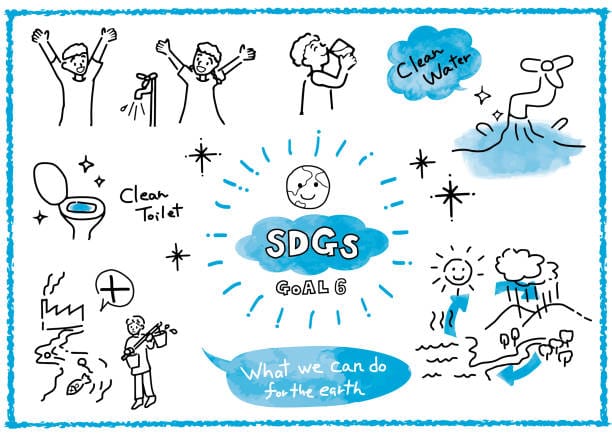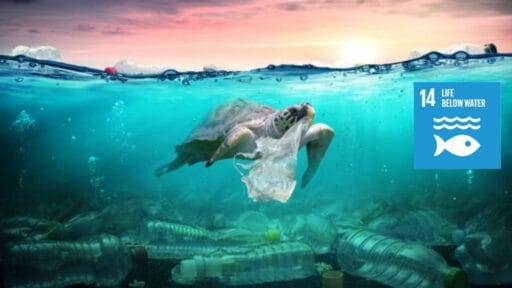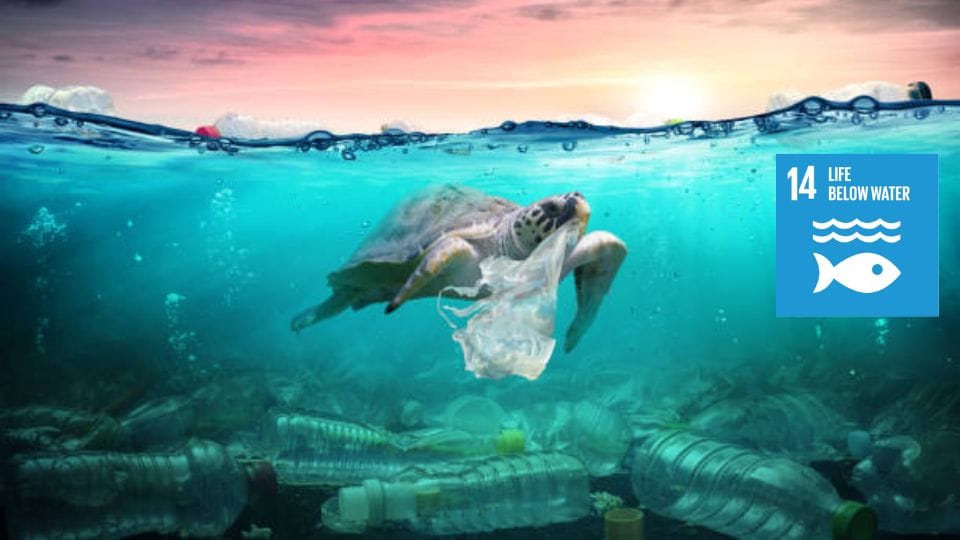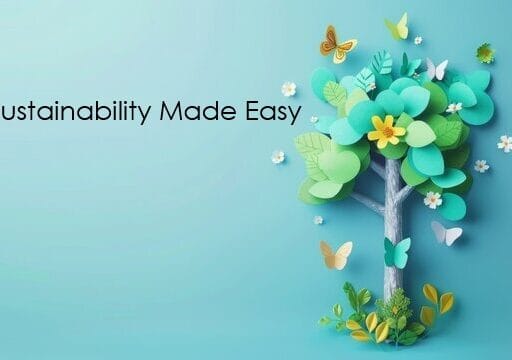Because they maintain biodiversity, control the climate, and provide a living for billions of people, the oceans and seas are essential to life on Earth. Nevertheless, overfishing, pollution, and climate change are posing a growing danger to these vital ecosystems. In recognition of the pressing need for action, the United Nations created Sustainable Development Goal 14 (SDG Goal 14): Life Below Water. For the sake of our planet’s and its people’s long-term health, this objective seeks to protect and manage marine resources responsibly. Global cooperation is needed to restore marine ecosystems, combat pollution, save biodiversity, and maintain sustainable fisheries in order to meet SDG Goal 14. In addition to offering a thorough case study of successful projects, this blog explores the complexities of SDG Goal 14, stressing its importance, difficulties, and workable answers.
Understanding SDG Goal 14
The conservation of oceans, seas, and marine resources while encouraging their sustainable use is the main objective of SDG Goal 14. Over 70% of the Earth’s surface is made up of oceans, which are essential to preserving ecological equilibrium. They supply food and livelihood for more than 3 billion people worldwide, absorb around 30% of carbon dioxide emissions, and control global weather patterns.
lowering marine pollution, preserving marine biodiversity, lowering ocean acidification, and guaranteeing sustainable fisheries management are the main objectives of SDG Goal 14. These actions are intended to improve ocean health and enable the prosperity of coastal communities. A major contribution to the overall achievement of the United Nations’ 2030 Agenda for Sustainable Development is made by SDG Goal 14, which tackles the urgent problems impacting life below the ocean.
Why SDG Goal 14 Matters?
Our planet’s oceans, which make up more than 70% of its surface and are essential to preserving ecological balance, are its lifeblood. SDG Goal 14, “Life Below Water,” highlights how crucial it is to preserve these essential ecosystems in order to guarantee a sustainable future. Oceans are essential to life on Earth because they create more than half of the world’s oxygen, absorb about 30% of carbon dioxide emissions, and control global temperatures.
An additional crucial component of SDG Goal 14 is marine biodiversity. From plankton to whales, the oceans are home to a staggering variety of organisms that support both economic stability and global food security. More than 3 billion people, mostly in coastal and island countries, depend on marine resources for their livelihoods. The annual billions of dollars made by the seafood business alone highlight the need of sustainable ocean management from an economic standpoint.
However, the condition of our seas is under danger due to human activity. Marine environments are at peril due to oil spills, plastic pollution, and agricultural runoff. Fish supplies are further depleted and the equilibrium of marine ecosystems is upset by overfishing and harmful behaviors. Furthermore, increasing sea levels, coral bleaching, and ocean acidification are all accelerated by climate change, endangering biodiversity and coastal populations.
Because it offers a framework for addressing these urgent issues, SDG Goal 14 is significant. This objective seeks to maintain ocean health for coming generations by encouraging sustainable fishing methods, lowering marine pollution, and creating marine protected zones. Ocean conservation is not only important for the ecosystem, but it is also essential for food security, climatic stability, and global economic resiliency.
Key Targets of SDG Goal 14
- Reduce Marine Pollution
A major reduction in marine pollution, especially from land-based activities, is the goal of Target 14.1. Addressing the issues of plastics, chemicals, and fertilizer runoff that disturb marine ecosystems is part of this. - Sustainable Fisheries
By 2025, Target 14.4 aims to eradicate damaging fishing methods, illicit fishing, and overfishing. Restoring fish stocks to sustainable levels is its main focus. - Marine Protected Areas (MPAs)
By 2020, at least 10% of coastal and marine areas should be conserved, according to Target 14.5. MPAs are essential for shielding wildlife and their habitats from human activity. - Ocean Acidification
Because ocean acidification is a serious danger to marine life and coastal economies, Target 14.3 emphasizes the need to reduce and remedy its effects.
Challenges
- Marine Pollution
Eight million tons of plastic enter the seas annually, putting ecosystems and marine life at jeopardy. This problem is made worse by inadequate garbage management, especially in developing nations. - Overfishing and Illegal Practices
Fish populations are reduced as a result of unsustainable fishing methods, which also upset the equilibrium of marine ecosystems. One of the biggest obstacles to sustainable fisheries is still illegal, unreported, and unregulated (IUU) fishing. - Climate Change Impacts
Ocean acidification, coral bleaching, and rising sea temperatures are all direct effects of climate change that endanger marine life and coastal populations’ means of subsistence. - Lack of Global Collaboration
Effective international cooperation in marine conservation initiatives is hampered by the size of the seas and conflicting national interests.
Case Study: Reviving Coral Reefs in the Maldives
One country that is highly dependent on its marine ecosystems is the Maldives, an archipelago of more than 1,000 coral islands. Coral reefs act as organic barriers against erosion and storm surges in addition to sustaining the nation’s thriving tourism sector. However, substantial coral bleaching has been caused by human activity and rising sea temperatures, endangering both local economy and marine biodiversity.
To address this, the Maldives initiated a large-scale coral restoration initiative known as “Coral Reefs Under Restoration.” As part of this program, local communities will be educated on sustainable practices and resilient coral species will be planted in regions of devastated reefs. With the help of marine experts and international organizations, the initiative has effectively regenerated important reef systems, increasing fish populations and improving coastal protection.
This project serves as an example of how focused effort and community involvement may help solve the issues raised by SDG Goal 14. For other countries looking to save their marine habitats, the Maldives sets an example by emphasizing sustainability and education.

Practical Solutions for Advancing SDG Goal Life Below Water
Adopt Circular Economy Practices
Reduce marine pollution by adopting circular economy models that decrease waste and encourage recycling, particularly of plastics.
Strengthen International Agreements
Global accords such as the United Nations Convention on the Law of the Sea (UNCLOS) and the Paris Agreement must be strengthened to safeguard marine resources.
Promote Sustainable Tourism
Encourage eco-tourism methods that provide economic advantages while protecting maritime environments.
Support Research and Innovation
Invest in tools for monitoring ocean health, tracking fishing operations, and effectively combating marine pollution.
Enhance Community Engagement
Empower coastal communities with information and resources to play an active role in marine conservation activities.
Fherist Services
Fherist, a global pioneer in sustainable projects, is crucial in achieving SDG Goal 14. By encouraging innovation and cooperation, Fherist is devoted to:
- Reducing Marine Pollution: Collaborating with industry to provide biodegradable materials and efficient waste management solutions.
- Protecting biodiversity includes establishing marine protected zones and funding restoration efforts such as coral reef repair.
- Educating Communities: Creating awareness campaigns to encourage ethical consumption and sustainable fishing methods.
Through these activities, Fherist helps to construct a sustainable future in which seas thrive and communities benefit.
FAQs
1. Why is SDG Goal 14 important?
SDG Goal 14 is vital for protecting marine ecosystems, which are essential for climate regulation, biodiversity, and economic livelihoods.
2. What are the targets of SDG Goal 14?
Targets include reducing marine pollution, promoting sustainable fisheries, minimizing ocean acidification, and conserving marine areas.
3. How does climate change affect SDG Goal 14?
Climate change accelerates ocean warming, acidification, and sea-level rise, threatening marine biodiversity and coastal communities.
4. What are marine protected areas?
Marine protected areas (MPAs) are designated regions where human activity is managed to conserve marine ecosystems and biodiversity.
5. How can individuals contribute to SDG Goal 14?
Individuals can reduce plastic usage, support sustainable seafood, and advocate for policies that protect marine environments.
Conclusion
SDG Goal 14: Life Below Water is about more than simply conserving the seas; it is also about maintaining our planet’s long-term viability. The oceans are vital to life on Earth, impacting climate, economics, and food security. Achieving this objective will need collaborative effort from governments, industry, and individuals. We can ensure a vibrant marine environment for future generations by addressing concerns like as pollution, overfishing, and climate change with innovative solutions and worldwide cooperation. With projects like Fherist’s and community-driven activities throughout the world, the vision of SDG Goal 14 is more than a possibility—it’s a must.








